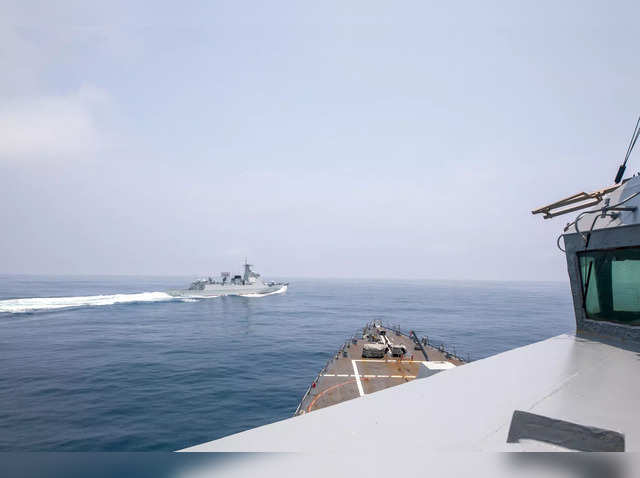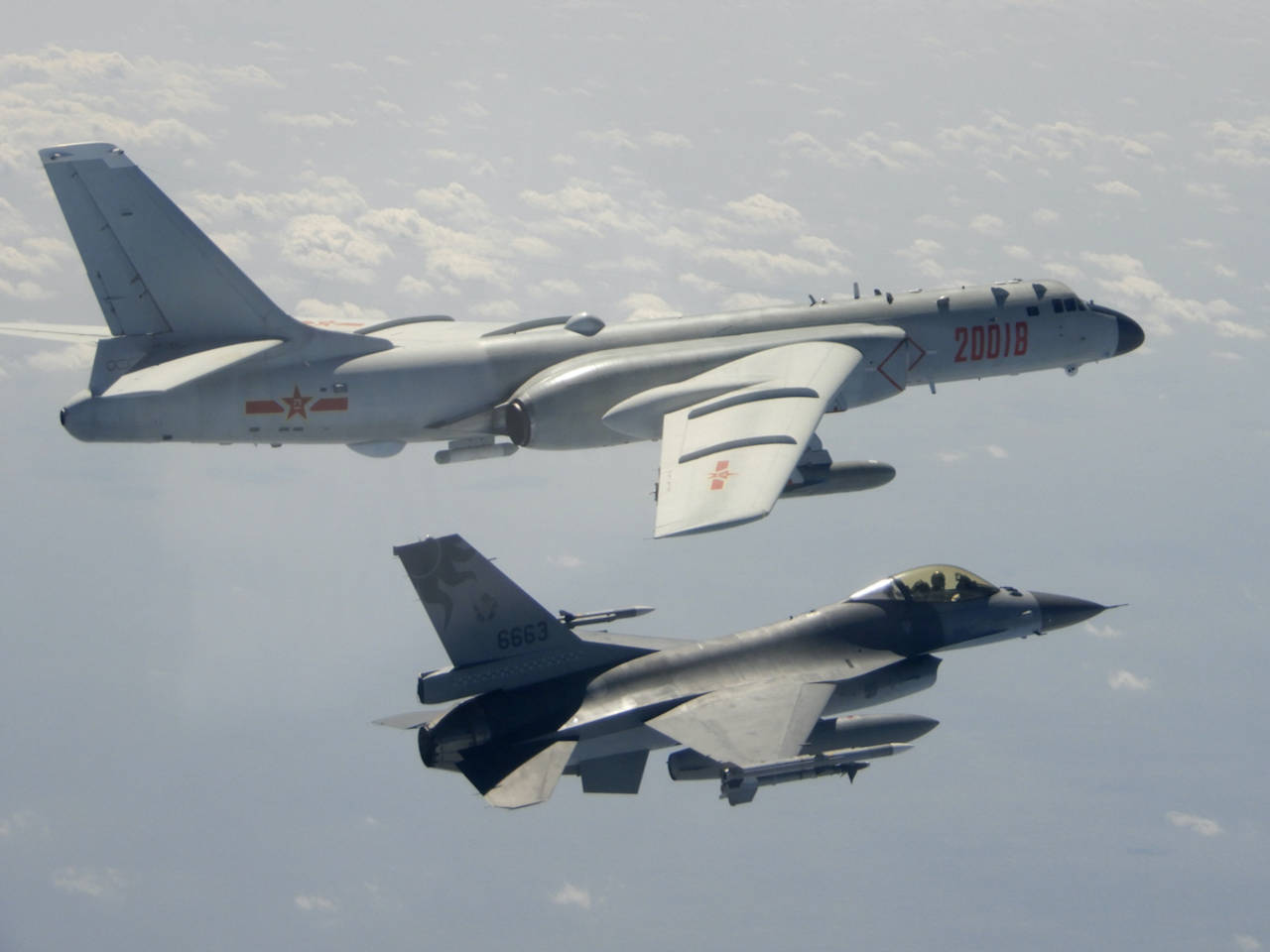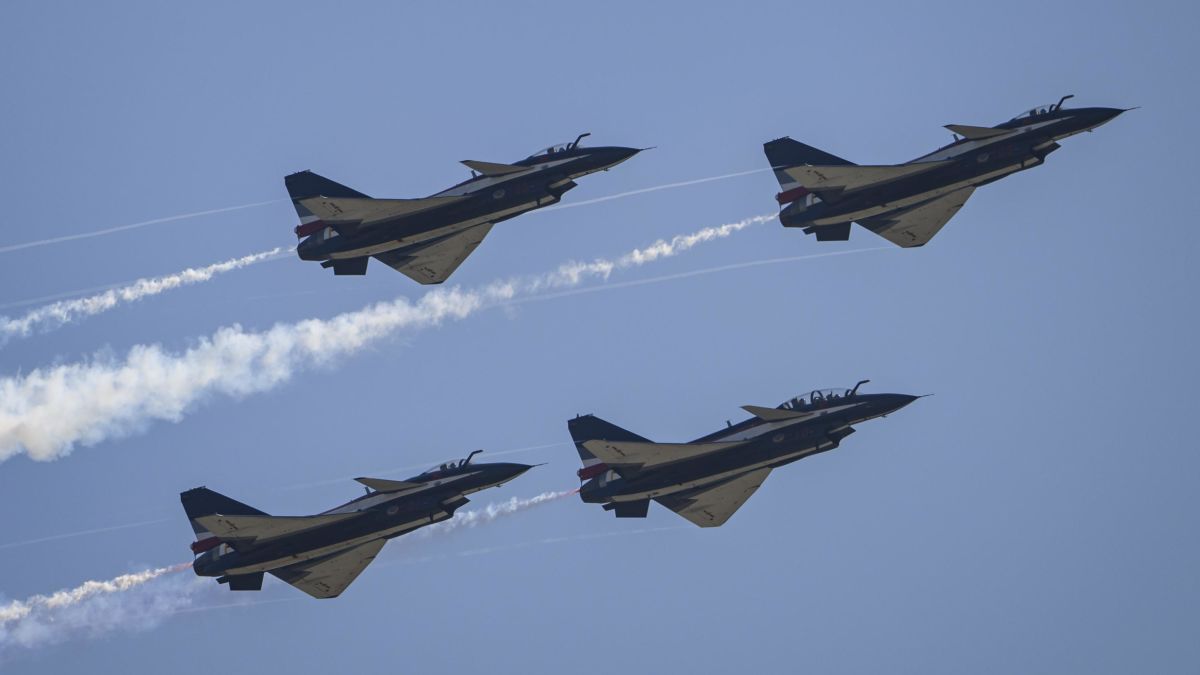China says sends fighter jets to warn US Navy patrol aircraft in Taiwan Strait

China says sends fighter jets to warn US Navy patrol aircraft in Taiwan Strait
China has reported that it issued a warning to a U.S. Navy patrol aircraft that transited through the Taiwan Strait. Additionally, China deployed its fighter jets in the region. This incident underscores the ongoing tensions and disputes regarding the status of the Taiwan Strait.
China asserts that the Taiwan Strait is within its jurisdiction, disputing Taiwan’s and the United States’ claims that it is an international waterway. The Taiwan Strait is a strategically significant waterway that separates Taiwan from mainland China. The Taiwan Strait has been a long-standing point of contention between Taiwan and China, with Taiwan considering it as international waters, and China viewing it as part of its territory.
The U.S. has frequently conducted freedom of navigation operations (FONOPs) in the South China Sea and the Taiwan Strait to challenge what it perceives as excessive maritime claims by China. These operations are meant to uphold the principle of freedom of navigation in international waters.
China’s response to such U.S. actions in the Taiwan Strait is indicative of the sensitive nature of the issue. Tensions in the region have persisted for decades, and both sides remain vigilant about safeguarding their respective interests.
The situation in the Taiwan Strait is a prominent aspect of broader U.S.-China relations, which have seen fluctuations and challenges in recent years. The status of Taiwan and the Taiwan Strait will likely continue to be a contentious issue in international diplomacy and regional security.
On the same day, the U.S. Navy’s 7th Fleet confirmed that the P-8A Poseidon maritime patrol and reconnaissance aircraft had conducted a flight through the Taiwan Strait. The statement clarified that the aircraft operated in what they consider international airspace. The P-8A Poseidon is a versatile aircraft utilized for various missions, including maritime patrol, reconnaissance, and anti-submarine operations.
This confirmation by the U.S. Navy’s 7th Fleet underscores the United States’ stance that the Taiwan Strait should be regarded as international waters, open to the freedom of navigation. It is consistent with previous U.S. actions in the region aimed at challenging China’s claims of sovereignty over the Taiwan Strait and reinforcing the principle of freedom of navigation in international waters.
Such actions can contribute to the ongoing tensions and disputes between the U.S. and China, particularly regarding Taiwan and the broader dynamics of the Indo-Pacific region. The situation in the Taiwan Strait remains a sensitive issue with implications for regional security and diplomatic relations.
The statement from the U.S. Navy’s 7th Fleet highlights their perspective on the matter. By conducting operations within the Taiwan Strait while adhering to international law, the United States asserts its commitment to upholding the navigational rights and freedoms of all nations. This stance is in line with the principle of freedom of navigation, which is a fundamental aspect of international maritime law.
Furthermore, the statement emphasizes the United States’ dedication to a “free and open Indo-Pacific.” This commitment reflects broader U.S. foreign policy objectives in the region, aimed at maintaining stability, security, and open access to international waters. The Indo-Pacific region is of strategic importance, and the United States has consistently asserted its interest in safeguarding these principles in the face of regional challenges.
The U.S. position on the Taiwan Strait and its actions there are part of a broader geopolitical context involving China, Taiwan, and regional allies. The Taiwan Strait remains a sensitive and contentious area, and actions taken by the U.S. in this region are closely watched and analyzed by international observers, given their potential implications for regional security and stability.
China’s military has characterized the U.S. flight through the Taiwan Strait as “public hype” and confirmed that they dispatched fighter jets to monitor and issue warnings to the U.S. aircraft.
The Eastern Theatre Command of the People’s Liberation Army (PLA) issued a statement reaffirming the readiness of its troops to defend national sovereignty, security, regional peace, and stability. This response from the PLA is consistent with China’s long-standing stance on the Taiwan issue, emphasizing its territorial claims and the importance of maintaining stability in the Taiwan Strait.
Taiwan’s defense ministry confirmed that the U.S. aircraft flew in a northward direction through the strait while adhering to the median line, which has traditionally served as a de facto boundary between Taiwan and mainland China. They also noted that Taiwan’s forces were closely monitoring the situation and reported that it remained normal.
It’s worth noting that China frequently conducts military activities in the Taiwan Strait and the surrounding waters and airspace, while Taiwan has also increased its military readiness in response to these activities.
The United States has periodically announced Poseidon missions through the Taiwan Strait, with the most recent one before this incident taking place in July. These actions are part of a broader strategy to maintain freedom of navigation in international waters and demonstrate support for Taiwan in the face of China’s territorial claims. The regularity of such missions reflects the ongoing tensions in the region and the geopolitical complexities surrounding Taiwan and its relationship with China and the United States.
The ongoing dispute over the Taiwan Strait underscores the differing perspectives of China, Taiwan, and the United States regarding its status. China claims “sovereignty, sovereign rights, and jurisdiction” over the Taiwan Strait, while both Taiwan and the United States consider it an international waterway open to freedom of navigation.
China’s stance on the Taiwan Strait is rooted in its assertion of territorial sovereignty and its historical claims over Taiwan, considering the island as a renegade province. This perspective extends to the waters surrounding Taiwan, including the Taiwan Strait.
Taiwan, on the other hand, asserts its own sovereignty and considers the Taiwan Strait as international waters. Taiwan has its own government, military, and political institutions, which operate independently of the People’s Republic of China. The median line in the Taiwan Strait has often served as a de facto boundary between Taiwan and mainland China, but it does not represent a legal or internationally recognized border.
The United States conducts military missions, including naval and aerial operations, through the Taiwan Strait as a means of upholding the principle of freedom of navigation in international waters. These missions aim to challenge China’s claims of sovereignty and jurisdiction over the strait, affirming the United States’ commitment to a free and open Indo-Pacific.
The disagreement over the Taiwan Strait’s status reflects broader geopolitical tensions in the region, where the United States, China, and Taiwan all have strategic interests. The regularity of such missions and the ensuing responses from all parties involved highlight the complex nature of this ongoing dispute.




